
URL Decode
URL Decode - Online Tools
Introduction
Web addresses serve as the gateway to a myriad of information and services. Behind the scenes, these URLs (Uniform Resource Locators) often include encoded characters to ensure proper transmission and interpretation. When it comes to deciphering these encoded URLs for effective data handling, the process known as URL decoding comes into play. We'll delve into the significance of URL decoding, its practical applications, and how developers can leverage this technique to work with web addresses more effectively.
What is URL Encoding?
Before diving into URL decoding, it's crucial to grasp the concept of URL encoding. When transmitting data within a URL, certain characters, such as spaces or special symbols, need to be represented in a format that is both safe for transmission and universally accepted. URL encoding achieves this by replacing such characters with a percent sign `%` followed by two hexadecimal digits representing the character's ASCII code.
For example, a space in a URL is encoded as `%20`, and the exclamation mark `!` is encoded as `%21`. This encoding ensures that URLs remain valid, safe, and universally interpretable across different systems.
Unmasking Encoded Web Addresses
URL decoding, as the name suggests, is the process of reversing URL encoding. It involves converting encoded characters in a URL back to their original form, allowing for human-readable and interpretable web addresses. This decoding process is essential for various scenarios in web development and data handling.
Significance of URL Decoding
URL decoding is crucial for presenting web addresses in a human-readable format. This enhances the user experience by displaying meaningful information instead of encoded characters. When web applications receive data via URLs, URL decoding is necessary to interpret and process that data accurately. This is especially relevant in scenarios where parameters or values are passed through the URL. URLs often include query parameters, and decoding these parameters is essential for extracting and utilizing the data they carry. This is common in web applications, APIs, and various data-driven services.
Form Data Submission and Handling API Requests
When form data is submitted through a URL, decoding is necessary to extract and process the submitted values. APIs often receive parameters encoded in URLs. URL decoding is employed to retrieve these parameters and respond accordingly. In web frameworks, URL decoding is utilized to interpret dynamic routes and extract values from the URL path.
Performing URL Decoding tool
For using this tool you need to enter the tool and you will see the clear cut web page look like the picture below. You will be able to decode any encoded web url with this tool.
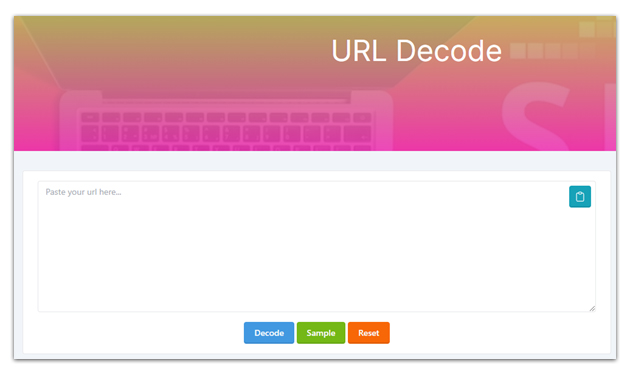
Then you will find a blank box for entering the text which will be empty. Just put your encoded url data on it.
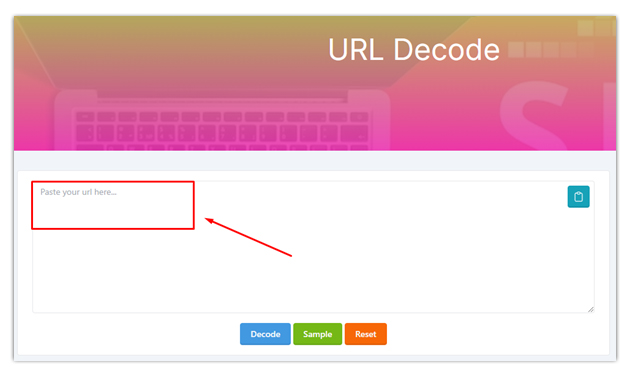
Now in the below section you will find three buttons named decode, sample, reset.
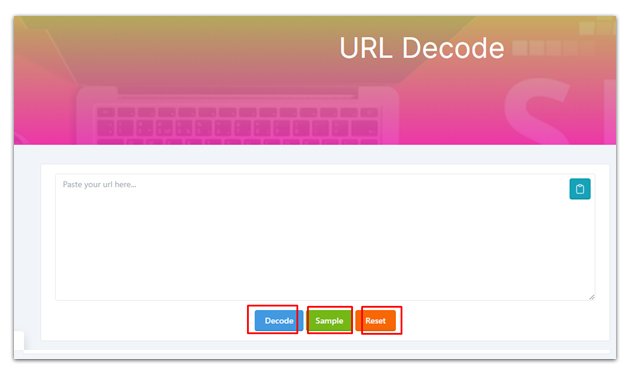
After entering the encoded data in the blank box just click the decode button.
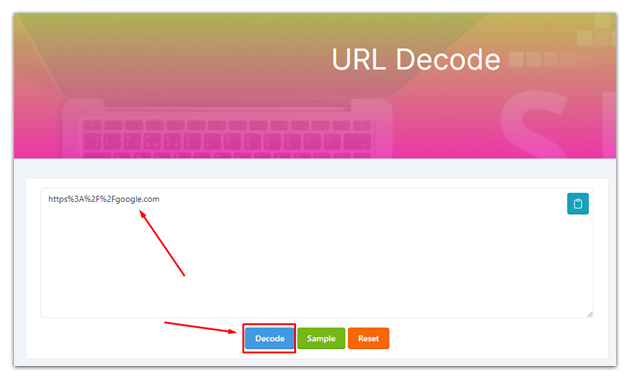
A result page will appear in the below section. Just click the copy icon at the top of the result page.
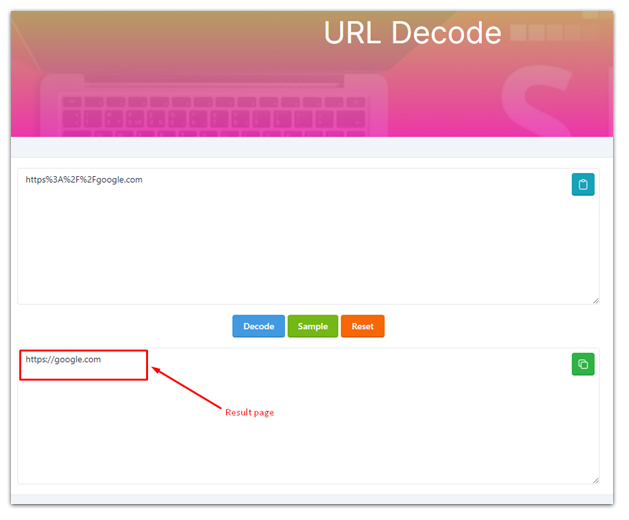
Hope you will enjoy our tool. If you need any help you can contact us.
Conclusion
URL decoding is a fundamental process in web development, playing a crucial role in ensuring the accurate interpretation and handling of data within URLs. Whether dealing with user-submitted form data, API requests, or dynamic URL routing, developers rely on URL decoding to unmask encoded characters and work with web addresses more effectively. As we navigate the interconnected web of information, URL decoding stands as an indispensable tool for enhancing the functionality and user experience of web applications.











